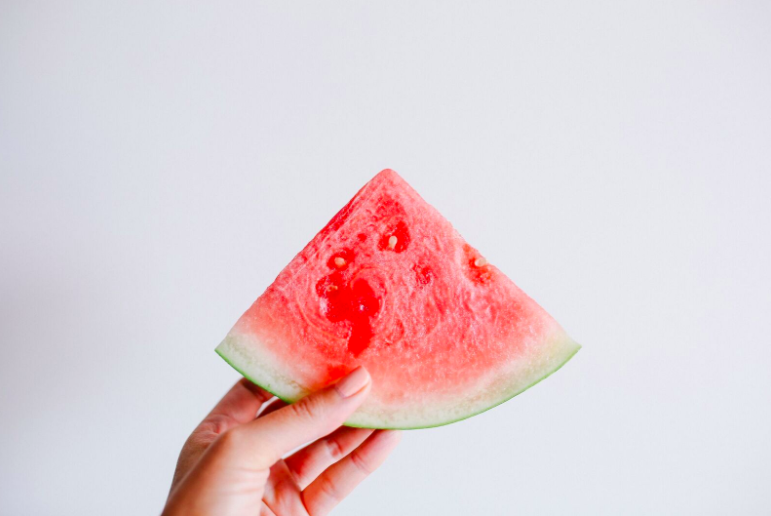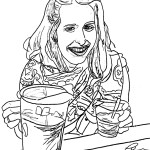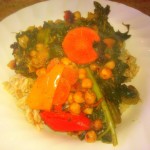ÏÏ Around the same time that the American Heart Association published a paper warning the public that coconut oil contained saturated fat, supposedly leading to heart disease, Netflix released the vegan documentary What the Health, which declared diabetes to be a disease of fat buildup in the blood, among other completely unscientific claims.
Around the same time that the American Heart Association published a paper warning the public that coconut oil contained saturated fat, supposedly leading to heart disease, Netflix released the vegan documentary What the Health, which declared diabetes to be a disease of fat buildup in the blood, among other completely unscientific claims.
It was no wonder that my inbox and social media were bombarded with comments from confused patients, family members and friends; their attempts at healthy eating were being called into question by this onslaught of confusing contradiction.
“But I’ve been adding coconut oil to my morning smoothies!” one person wrote.
“I’ve switched to a plant-based diet!” another triumphantly declared. She was currently seeing me for treatment for her long-standing anemia.
Don’t: Freak Out
It seems like every new nutrition-focused Yahoo! News article lifts the protective rock of certainty off the health-conscious, sending us scuttling frantically for cover like newly exposed garden grubs.
You can hardly blame us. As someone who studies health and nutrition for a living, even I find myself caught up in this health claim game of ping-pong. How could one claim be true if the complete opposite claim was being made? Was coconut oil the devil incarnate, or the next belly-fat blasting super food? Do vegan diets cure diabetes or cause it?
I take my eyes off the ping pong ball and stop to massage my neck.
Do: Understand the Power of Food
If there is one right diet for humans, then we certainly haven’t found it through modern-day nutritional research. One of the problems with finding a standardized “perfect” human diet is that humans are not gerbils: our food serves various functions.
A good diet fuels the body, prevents disease and promotes health, but also provides us with a source of pleasure, soothes emotional pain, gives us something to look forward to, serves as a reward (for ourselves, our loved ones, our children), takes centre stage during celebrations, supports social cohesion, and encourages meeting attendance, or blood donations.
Food allows us to wallow in the luxury of our senses, or to commune with the Divine. Eating and making food serve as hobbies, creative outlets, and so on.
Food holds a sacred place in virtually every human culture.
As a naturopathic doctor, I use food as a medicine; the food we eat has the power to reverse disease and promote health.
With conditions like cardiovascular disease, type II diabetes, and mental health conditions, on the rise, it becomes imperative that we make an effort to understand the health impact of our food choices.
Understanding the Do’s and Don’t’s of Nutrition can help us harness the power of food to heal the body and prevent disease.
Do: Be Critical of Nutrition Research
Nutritional research, while essential for separating the gluten-filled wheat from the chaff, is flawed in many regards.
Because well-controlled, long-term clinical trials on compliant humans are nearly impossible to do, much of the nutritional information we rely on comes from epidemiological studies, which establish relationships between two isolated variables, such as a food and a health outcome (red meat consumption and colon cancer incidence, for example).
When evaluating these studies it is important not to confuse correlation with causation. This is what happened in the 1950’s, when Ancel Keys published his famous Seven Countries Study that claimed to link saturated fat intake and coronary artery disease.
Keys’ findings led us to toss out our delicious bacon and egg breakfasts in lieu of spending the next 60 years munching fat-free yogurt and sugary cereal.
Keys assumed that because saturated fat, dietary cholesterol, and heart disease were linked (in the seven countries he included data for) that the relationship was causal. However, we know from current research that this is not true—correlation does not equal causation.
Other things that correlate with an increased incidence of heart disease are paying tax in Sweden and owning multiple TV sets. While paying taxes may certainly give you chest pain, avoiding them will probably not reduce your heart disease risk.
Nutrition researchers attempt to account for as many relevant lifestyle variables as possible, but there are many that they miss.
For example, studies may record whether the participants smoked, drank, or exercised, but important variables such as the status of their gut microbiome, or how they season their meat, are often left out. This can be problematic—when we fail to include everything, we’re bound to miss something.
While nutritional research is essential for understanding how food interacts in our bodies, we certainly need to take most studies with a grain of salt (which a new study shows has no impact on your blood pressure).
Do: Pay Attention to What Healthy Traditional Societies Ate
Speaking of salt, any human nutrition article wouldn’t be worth its weight in it without mentioning the work or Dr. Weston A. Price. Dr. Price was a Canadian dentist who lived at the turn of the 20th century, when food was becoming more industrialized.
Suspecting that the increase in tooth decay he was noting in his child patients was diet-related, Price set out on a 10-year journey in the 1930’s to find the “perfect diet” by analyzing what traditional human societies ate.
He studied populations in remote Swiss villages, in the Americas, African tribes, Australia and New Zealand, and the Melanesian and Polynesian South Sea Islanders. Dr. Price took meticulous notes, food samples for analysis, and many pictures, all of which he published in his book Nutrition and Physical Degeneration.
While many of the populations he studied had also begun to experience the creeping influence of an industrialized food economy, others had still managed to retain their native diets. Due to globalization and its effects on traditional communities, this type of study could never be done today.
Price found some of the populations exhibited incredible characteristics of robust health. They had decay-free, straight white teeth, flawless facial and jaw structures indicating healthy bones, and no diseases; cancer and autoimmune conditions were virtually nonexistent across generations in these populations.
Price noticed that, while the healthy populations’ diets consisted of a variety of foods and macronutrients, they all had very important commonalities.
Don’t: Consume Processed Foods:
First of all, Dr. Price found that the healthiest populations somehow managed to avoid the flood of industrial food products. They refrained from eating refined flours, sugars, food additives, and vegetable oils, and stuck to their native diets of meat, eggs, dairy, fish, fruits, and vegetables.
He noted that, once processed foods started to creep into a population’s diet, dental decay and degenerative diseases, such as cancers, tended to quickly follow.
Don’t: Eat Anything Your Grandmother Wouldn’t Recognize
Michael Pollen, author of The Omnivore’s Dilemma, reminds us of some simple food rules, such as his famous “Eat food. Not too much. Mostly plants.”
In his book, Pollen clearly differentiates between “food”, i.e.: something your grandmother would recognize, and something “made from a plant, not in one”, and “edible food-like products”, which tend to increasingly populate our grocery stores, kitchen cupboards, and bodies.
Refined sugars and vegetable oils have increased exponentially in the average diet in the past few decades. So have metabolic degenerative diseases such as cancer, diabetes, and heart disease.
It seems that the entire food industry, from the way grocery stores are set up, to the way that foods are marketed to consumers, to the promotion of a culture of snacking, is built around encouraging the consumption of processed, “edible food-like products” rather than real foods.
The book The Dorito Effect outlines how the food industry engineers processed foods to contain taste, textures and chemicals that override our body’s hunger and satiation signals in order to monopolize our cravings, leading us to overeat.
Steering clear of these packaged, processed and over-produced food-like products is essential for promoting health.
Do: Eat Whole Foods
Stick with consuming what Michael Pollen classifies as “food”: whole substances that come from plants and animals, that resemble how they are found in nature, and that usually exist in the periphery of the grocery store.
Prepare foods at home as much as possible. Avoid foods in packages that contain more than 5 ingredients, especially if the ingredients listed are unpronounceable, or something your average 5th grader wouldn’t recognize.
As early on as the 1930’s, Dr. Weston A. Price was already noting an increase in tooth decay and jaw malformation in children who were consuming the industrialized processed foods that were beginning to enter the North American diet.
Since then our consumption of processed foods, refined sugars, vegetable oils and flours has increased, and so have our incidences of chronic, lifestyle-related diseases.
Therefore: Eat Food. Not too much. Mostly plants (and animals).
Do: Consume Animal Products
Dr. Price found that every population he studied consumed some form of high-nutrient animal product. While some populations were vegetarian, consuming raw dairy products, none were vegan.
Every healthy population consumed some combination of fish, organ meats, insects, eggs and dairy from pastured animals. All animals consumed were obtained from nature and ate their natural diet; cows ate grass and poultry ate grass, grubs, and worms.
They consumed the entire animal, favouring nutrient-rich organs over muscle meat: liver was highly valued. They used bones to make gelatin, which provides a source of bone, skin and connective-tissue-building collagen.
Obtaining enough organ meats, fish, egg yolks and grass-fed beef and dairy allowed the healthiest populations to achieve ten times the dietary intake of the fat-soluble vitamins A, E, D and K than the typical North American.
Do: Consume Fat
The healthiest populations that Price studied consumed anywhere from 30 to 80 percent of their total calories from fat. Most of these fats were saturated, obtained from animal sources, and heart-healthy monounsaturated fatty acids, obtained from foods such as olives, avocados, and macadamia nuts. Only 4% of the fat they consumed came from the polyunsaturated fats that are found in vegetable oils, nuts, seeds, processed grains and legumes (like corn and soy), and fish.
Vilified for years in North America, fat is essential to the human diet: it builds our brains, nervous systems, hormones, and cell membranes. Fat is a fuel source for our brains. It aids our bodies in blood sugar regulation and the absorption of essential nutrients.
Contrary to what we’ve been told for the last few decades, a low-fat diet, rather than a high-fat one, is associated with increased risk of mortality.
A 2017 Lancet study that observed the diets and disease risk of 135,000 people found that total fat intake, including saturated fat, was not associated with any increase in cardiovascular disease or mortality. The study also found that when saturated fat intake increased the risk of stroke decreased.
Don’t: Consume Vegetable Oils
Polyunsaturated fats, or PUFAS, exist as omega 6 (found in processed vegetable oils like corn, soy or canola oil) and omega 3 fatty acids (found in fish, nuts and seeds).
Healthy human populations generally obtained a 1 to 1 ratio of omega 6 to omega 3 fatty acids. The increase in cheap vegetable oils in our diets has brought our inflammatory omega 6 fatty acid levels up substantially, to a ratio of 10 to 1. With this increase we see a rise in inflammatory health conditions: arthritis, diabetes, obesity, cardiovascular disease, mental health conditions, and autoimmune disease.
Vegetable oils like canola, corn and soya oil require intense chemical processing and are very unstable, becoming rancid quickly. Their high omega 6 content promotes inflammation.
Avoid these oils whenever possible by avoiding store-bought salad dressings, packaged foods, restaurant foods, and fried foods. Instead, cook from home whenever possible using the healthier oils from olives, coconut, and avocado, or using butter and ghee.
Do: Consume Fermented Foods
Our microbiome, the universe of trillions of bacteria that live inside our digestive tracts, has become the subject du jour of intense medical research. The health of our guts has been associated with virtually every disease, from our mental health to our risk of inflammatory, degenerative diseases, to our circadian rhythms and stress responses.
It is no wonder, then, that Weston A. Price, found in the 1930’s what modern science is now confirming: the healthiest human populations regularly consumed fermented foods, like kefir, that were rich in healthy probiotics.
These populations also soaked, fermented and sprouted their grains, seeds and legumes to neutralize their lectins and phytates. Lectins present in grains and legumes can cause inflammation and autoimmune reactions, while phytates act as anti-nutrients, preventing absorption of minerals in the digestive tract.
Fermentation supports the health of our gut bacteria and aids in the digestion of various foods.
Do: Personalize Your Diet
While the work of Weston A. Price and intuitive wisdom—avoid fake foods wherever possible—can serve us in our eating choices, there was a significant amount of variability among the foods consumed in healthy human diets.
How do we know what foods will help us thrive personally?
Eran Segal, in his popular Ted Talk, presents a variety of blood sugar responses to different types of carbohydrate-rich food.
When we eat food high in carbohydrates, our blood glucose levels rise as those carbs are broken down into simple sugars in the digestive tract and then absorbed. Constantly spiking blood sugar levels, when done repeatedly over time, is a recipe for fat-gain and increasing our risk of type II diabetes.
Segal and his team found that some foods, like bananas or white rice, caused a marked increase in blood sugar levels when some study participants ate them, while foods like cookies and ice cream had no effect, slowly raising blood glucose levels rather than dramatically spiking them.
There were other study participants, however, who experienced the opposite effect: a marked spike in blood sugar in response to sugary foods, like ice cream, and a more gradual increase (consistent with healthier blood-glucose control) in response to rice and cereal grains.
Segal found that an individual has a personalized blood sugar response to certain foods, which can be predicted by their genetics and microbiome, among other factors.
Segal’s team concluded that dietary guidelines are not one-size-fits-all. Each individual may have a specific set of foods on which they thrive.
Do: Find Your Perfect Diet
So, how do we find our perfect personalized diet?
Life coach, Brooke Castillo, of the Life Coach School Podcast has some useful guidelines. Castillo suggests four questions to ask yourself when eating a specific food to find out if that food is right for you:
1) Does this food taste good to me?
2) Does this food feel good in my body?
3) How is this food acting in my body?
4) Is this food helping me get me the health results that I want?
Do: Eat Food You Like
As a naturopathic doctor, I know: it doesn’t matter how good a particular food may be, if my patient doesn’t like it, he or she won’t eat it.
Finding the perfect diet for us involves eating a variety of unprocessed foods that provide us with fuel and that we look forward to eating. However, it can take a while to learn what real food tastes like if our palates have been manipulated by the chemically-enhanced flavours of processed foods.
Ayurveda, a 6000-year old medicine from India, identifies 6 tastes: sweet, sour, salty, spicy, astringent and pungent; a healthy diet consists of all 6 tastes.
The Standard American Diet contains mostly sweet taste, with some salty and sour (alcohol) added to the mix. Being relatively rare in nature, the human palate evolved to prefer these tastes over others (such as bitter taste, which is abundant in antioxidant-rich plants).
In order to balance our diets, we may need to make an effort to consume more bitter or astringent foods from micronutrient-rich leafy green vegetables. Training ourselves to appreciate a variety of tastes may be important for finding a diet that fuels us while also bringing us pleasure.
Do: Pay Attention to How Foods Feel in Your Body
If Eran Segal’s study subjects had had experience practicing mindful eating and body awareness, I wonder how many of them would have already known whether their bodies could better tolerate white rice or ice cream.
If they had been paying attention to their body’s cues, it’s possible that they already knew that white rice spiked their blood sugar, causing symptoms of shakiness, dizziness, brain fog and lethargy, or increased hunger and sugar cravings.
Whenever I see a new patient, I have him or her record their food intake for two weeks along with any symptoms experienced in their bodies. This exercise almost always proves useful in a variety of ways. Patients notice that certain foods make them feel bloated and lethargic, or cause headaches, while other foods reduce their cravings and provide them with level energy.
Paying attention to how our body feels immediately after eating or in the hours following, can provide us with invaluable information about the specific effects certain foods have on us.
Do: Consider Working With a Professional
To answer Brooke Castillo’s 3rd guideline question “How is this food acting in my body?” you may need to work with someone who understands nutritional biochemistry and physiology.
For example, you may love cheese and it may feel good in your body immediately after you eat it.
However, unbeknownst to you, cheese may be causing a delayed food sensitivity reaction that produces symptoms many hours to days later and contributes to your symptoms of hormone imbalance. Cheese may be encouraging mucus production, contributing to your chronic sinus congestion.
The way different foods interact with our hormones and immune systems may not be apparent immediately after we ingest them. The effects may be delayed or slowly accumulate over time. Gaining a professional’s view on the impact a food has on our complex bodily systems, including our personalized genetics and gut microbiome, can help us understand whether that food has a place in our ideal diet.
A professional combines his or her knowledge of the body with your knowledge of your own body, your health history, and blood tests, to help you identify which foods might not be right for you.
Do: Eat Food that Supports Your Health Goals
As Hippocrates once said, “Let food be thy medicine.” As a naturopathic doctor, I believe that nutrition has an important place in disease prevention and healing. Each bite of food we take can have the effect of moving us toward health or away from illness.
Our nutritional requirements will differ depending on our health goals. A 71-year old woman undergoing chemotherapy and radiation for stage 2 lung cancer will be eating a very different diet than her 24-year old bodybuilding grandson. A 42-year old woman who has polycystic ovaries and hopes to get pregnant in the next year will also have completely different dietary requirements and health goals.
You might love the food you eat. It might feel great in your body; you’re eating unprocessed, whole foods you prepare at home. However, you’re not feeling as amazing as you feel you should. Perhaps you feel tired, or struggle to lose weight. You might suffer from depression, diabetes, or daily digestive symptoms.
Depending on your health goals, a healthcare professional can work with you to find the ultimate nutrition do’s and don’ts for your body.
Do: Have Courage
Dipping our toes into the deep pool of human nutrition can be a daunting, yet essential act. Our dietary habits have the power to deeply influence our health. In the words of Ann Wigmore, “The food you eat can either be the safest and most powerful form of medicine, or the slowest form of poison.”
Removing processed foods from our kitchens, eating whole foods, cooking at home, eating enough of the right types of fats, developing awareness of how foods feel in our bodies, and considering working with a professional to help us reach our health goals through diet and lifestyle changes, can have a powerful impact on the quality of our lives.






